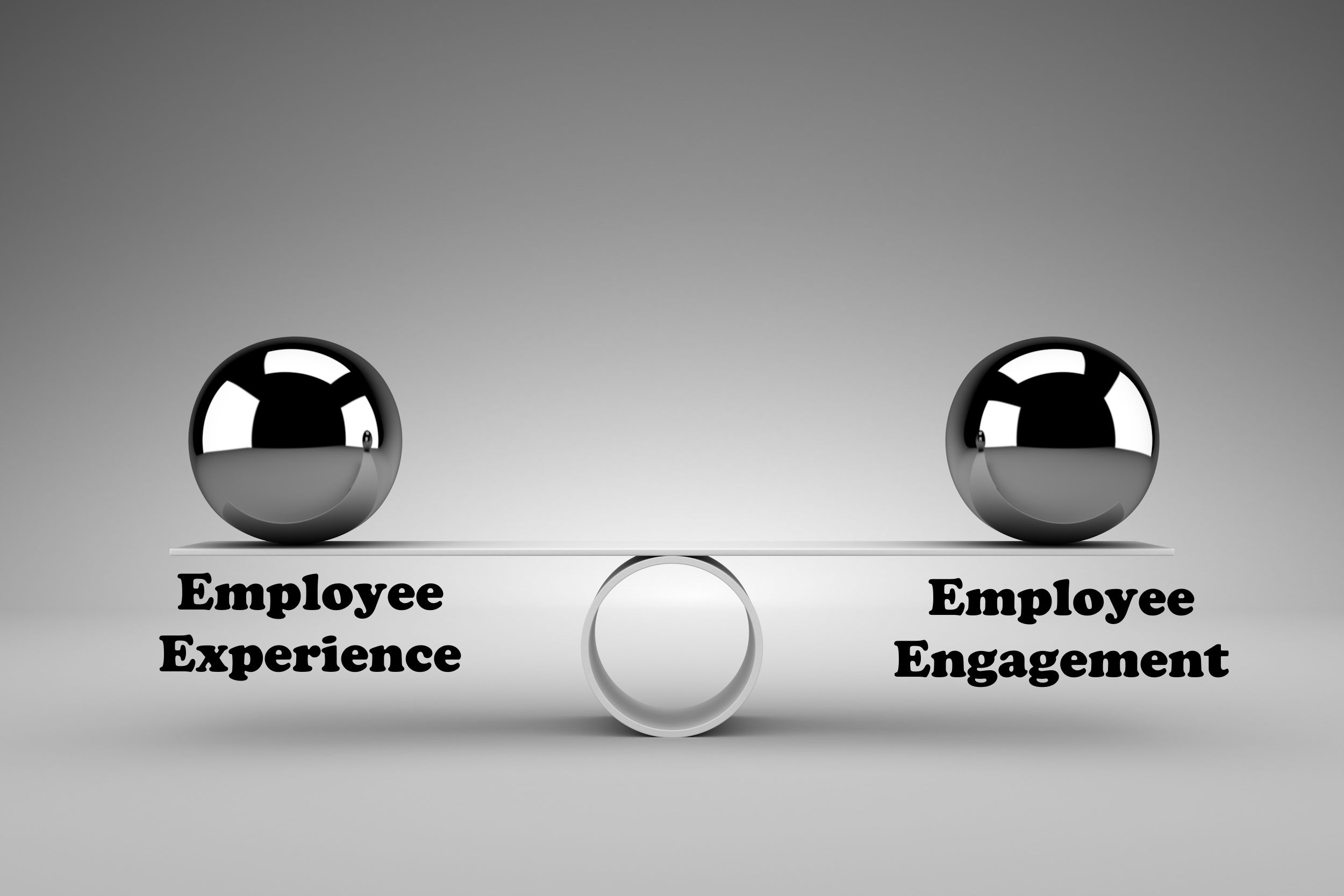Employee experience and employee engagement are two critical concepts that profoundly influence an organization’s success. Creating a motivated, productive, and loyal workforce requires a delicate balance between these two crucial elements. While these terms are often used interchangeably, they represent distinct but interrelated concepts that contribute to a thriving workplace culture. There is a need to identify the differences between employee experience and employee engagement to formulate strategies for achieving a harmonious equilibrium between the two.
Employee experience encompasses all the interactions, perceptions, and emotions an employee encounters throughout their journey within an organization. It encompasses every touchpoint, from the recruitment process, onboarding, daily work activities, to the departure or retirement from the company. An exemplary employee experience prioritizes employee well-being, satisfaction, and growth, fostering a positive work environment that encourages long-term commitment.
The key elements contributing to a positive employee experience include a well-structured onboarding process that ensures that new employees feel welcome, a healthy work-life balance that enhances their overall satisfaction and reduces burnout, a diverse and inclusive workplace that fosters a sense of belonging, and continuous feedback to help employees feel valued and demonstrate a commitment to their growth and improvement.
Employee engagement, on the other hand, refers to the level of emotional commitment and dedication an employee has towards their job, the organization, and its goals. Engaged employees are enthusiastic, motivated, and wholeheartedly invested in achieving their goals and the organization’s objectives. Engaged employees are more likely to go the extra mile, be innovative, and remain loyal to their employer.
The key factors that drive employee engagement include open and transparent communication from management, acknowledging and rewarding employees’ efforts and achievements, providing employees with opportunities for professional development and career advancement, and a supportive leadership who demonstrate empathy, fairness, and understanding towards employees.
While employee engagement and employee experience are distinct concepts, they are deeply interconnected. A positive employee experience creates the foundation for higher engagement levels. Engaged employees are more likely to have a positive experience at work, reinforcing a virtuous cycle of productivity and job satisfaction.
To strike a balance between employee engagement and employee experience, organizations can take four strategies.
First is to prioritize employee well-being. Organizations need to encourage a supportive work environment that promotes physical, mental, and emotional well-being. Promoting a healthy work-life balance can be achieved through employee well-being initiatives, offering mental health support, and providing resources to manage stress effectively. In addition, business leaders should recognize that every employee has unique needs and preferences by offering flexible work arrangements, personalized development plans, and opportunities for growth to cater to individual aspirations.
Second is to foster a growth mindset. Organizations should invest in continuous learning and development opportunities for employees and provide resources and training programs that align with both organizational goals and individual career aspirations.
Third is to invest in technology. Organizations should implement user-friendly tools and systems that streamline work processes and enhance the overall employee experience. Employee engagement tools can be maximized from existing collaboration tools that were implemented by organizations during the pandemic.
Forth is to emphasize the organization’s purpose. Studies have shown that employees, especially those belonging to the younger generation, become loyal and are more motivated when they relate to the organization’s purpose. Hence, organizations should communicate its mission and values to help employees understand the impact of their work on the organization and society. Business leaders should keep employees informed about the company’s goals, and progress and encourage open dialogue and transparency.
Balancing employee experience and employee engagement is essential for building a thriving, motivated, and committed workforce. A positive employee experience lays the foundation for increased engagement, productivity, and retention, while engaged employees contribute to a positive organizational culture and drive innovation. Organizations that prioritize both elements and implement strategies to achieve this balance are more likely to succeed in today’s dynamic business world. By valuing their employees as integral assets, organizations can unleash the full potential of their workforce and achieve long-term success.
Originally published in Manila Bulletin.
Tag/s:Business TransformationFuture of WorkOrganizational Change






Hi Rey, absolutely loved your article! We have very similar thoughts on this topic, and I’ve written similar articles about this topic in the past. Especially like how you focused on employee engagement by articulating, “the level of emotional commitment and dedication an employee has towards their job, the organization, and its goals. Engaged employees are enthusiastic, motivated, and wholeheartedly invested in achieving their goals and the organization’s objectives. Engaged employees are more likely to go the extra mile, be innovative, and remain loyal to their employer.